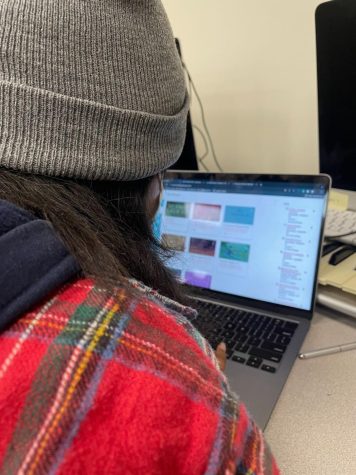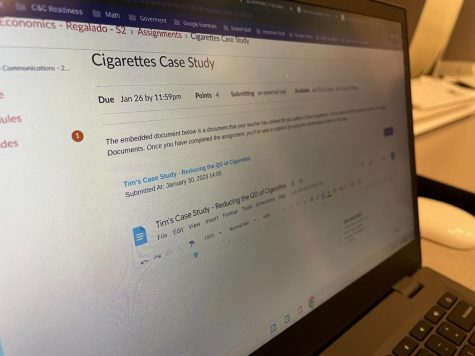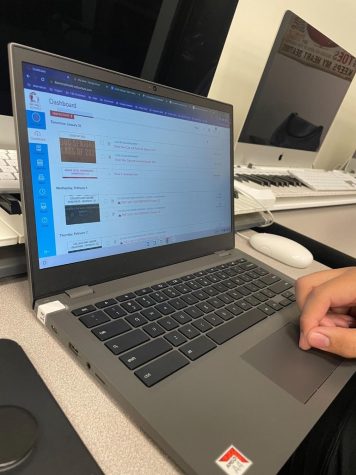DVC Switches Educational Platforms Mid-Year

The new year has welcomed many new changes, which include several alterations to the DVC infrastructure. After all, starting Jan. 11 after winter break, DVC’s learning management system switched from Google Classroom to Canvas.
However, not much is known as to why the swap was necessary. DVC’s principal, Erin D’Souza, clarified why the switch to Canvas was made.
“It was always hard for parents to know if an assignment was missing and how to follow up because the Google interface for parents isn’t very good. So it was kind of a way to streamline it all and bring it all together, and make it more accessible for parents and then more streamlined across our organization,” D’Souza clarified.
The switch to Canvas promotes accessibility across all audiences, as well as a uniform experience within the Da Vinci organization. Additionally, it also offers organizational benefits, as stated by ninth grade teacher, Regina Flores.
“Everything is in one central location. I think that’s positive because it makes grading easier. It makes it so parents can see stuff. It makes it so I can message parents really easily too,” said Flores.
D’Souza also mentioned that the majority of incoming Da Vinci students stem from Richard Henry Dana Middle School, which is known for its utilization of Canvas. Knowing this, it could provide incoming high school students a sense of familiarity within the new experience of high school. Richard Henry Dana Middle School alum and current ninth grader, Lucia Acosta, affirmed this point.
“I used Canvas at my middle school. So it’s been pretty easy to transition, especially with the freshmen teachers already switching to Canvas,” they said.
Even though the swap had good intentions, the transition was still incredibly abrupt, especially to the upperclassmen of Da Vinci Communications. Tristan Abraham, a senior at DVC, shared his experience with Canvas thus far.
“I mean, seeing as some classes started off with it last semester, it wasn’t like a huge shock. But I just think it’s a really clunky interface… since it has separate modules and assignments that feel like the exact same thing but they’re not,” he said. “I think that the entire switch is just a bit jarring for kids who didn’t have it before.”
This seems to be the opinion of the majority of the upperclassmen student body. Even with the awareness of the change as early as first semester, nothing could really prepare students for the experience of switching to a new learning management system.
Additionally, being accustomed to the simplicity that Google Classroom offers has left students confused about the way Canvas works. Sophomore Jabin Rodas explained this in vivid detail.

“I hate it. I hate Canvas with a burning passion,” Rodas said. “It’s harder to use than Google Classroom since most of my assignments don’t submit even though I submit them multiple times.”
Clarissa Cortes, a sophomore at DVC, also reinforced the preference of simplicity provided by Google Classroom.
“To be honest, they should have just stuck with Google Classroom because they already had everything on there. I don’t really understand why they had to move everything onto Canvas when Google Classroom is just way easier to navigate,” Cortes said.
Besides the student body, teachers also have something to say about the transition. Flores expressed the grading issues that Canvas currently faces, even after using it for a full semester.
“It’s still hard because we do mastery based grading, so we don’t average out all of our assignments. Instead, we have to look at the preponderance of evidence and then grade on the mastery column, but [the grades] are not always syncing. That is something that we are trying to figure out right now.“
This prompts the question of what could have been done to make the overall transition smoother, especially to mitigate the suddenness of the entire situation. 12th grade teacher, Ajane Dodson, explained what could have helped ease the switch.
“I guess more individual support. I reach out to other teachers when I need help but I guess more opportunities for me to bring up individual concerns that I have and have somebody work with me that will probably be helpful,” Dodson shared.
This is especially prevalent due to the nature of Canvas, which contains intricate details that can be difficult to grasp if not explained properly. Additionally, Canvas provides a flurry of different new features, which can be used to their full potential if understood.

From the student side, Dallas Estell, a senior at DVC, shared their opinion on how the transition could have been smoother for them.
“I really wish they at least let us keep Google Classroom for a little bit more, or at least until the end of the second semester. And then we could have had a class to be able to incorporate and transition to Canvas,” they said.
Even with the wishes of what could have been done better, the change to Canvas could definitely have a positive impact on the future, especially with overall organization and grading. After all, the results from change require time and patience to achieve. D’Souza expressed her hope for the new learning management system and overall incorporation within DVC.
“It’s been relatively positive, but there are still ways that I think that we could potentially be more efficient,” she said. “It’s hard to figure out how to best use the system, but also how to not compromise your values. It’s kind of where we’re at.”